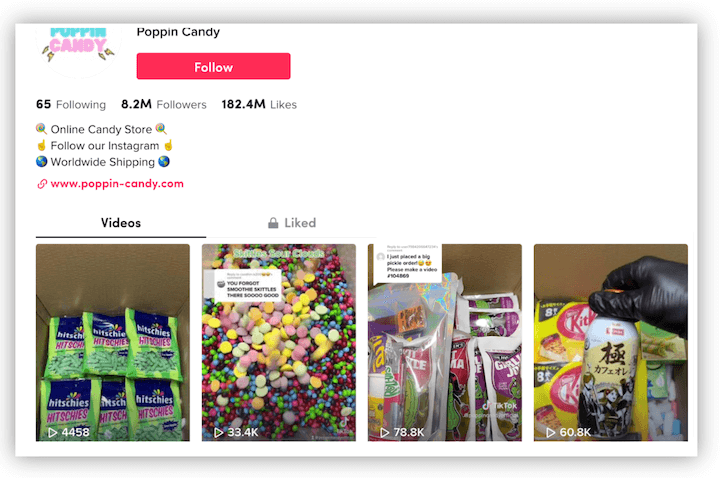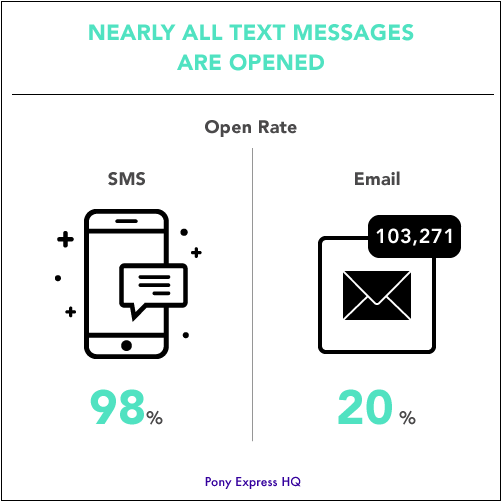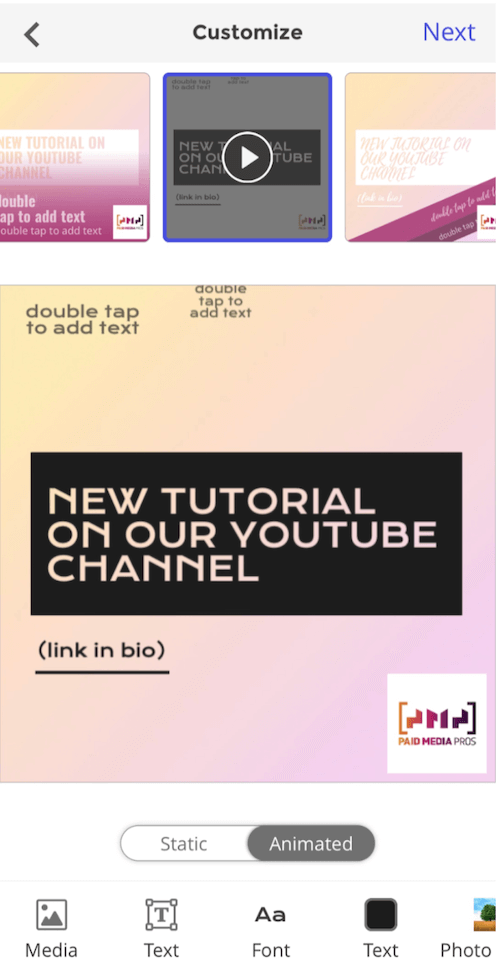Ecommerce Marketing Channels for New Store Owners tips
Here’s the thing about digital marketing channels: there’s no shortage of them out there, but as a new store owner, you cannot afford to be on every one. Nor do you have the time to figure out which ones are best for you.

This troubling image concepts what it feels like to be a new ecommerce store owner.
So, we’re going to save you hours by sharing the top seven ecommerce marketing channels for new businesses—including the pros, cons, and tips for getting the most out of each one!
The top 7 marketing channels for ecommerce stores
Below are the top ecommerce marketing channels we recommend for new store owners to drive sales and maximize profit.
1. Influencer marketing
As a new store owner, influencer marketing is one of the guaranteed ways to fast-track your journey to market. There are micro-influencers in every industry, and consumers respect and follow the recommendations and words of authority figures they know.

Pros
- Builds trust.
- Easiest way to spread word of mouth.
- Cheaper than mainstream media.
- Very effective if executed properly.
Cons
- Difficult to predict ROI.
- A change in the influencer’s reputation could impact your brand.
- Can be hard to identify and get responses from influencers.
Tips
Gretta Van Riel, a multiple 7-figure ecommerce store owner, uses influencer marketing as her primary marketing channel. Here are some tips from her on how to get the best out of influencer marketing:
- Give your influencers creative freedom. They know their audience better.
- Do not overwhelm influencers in your initial outreach message.
- Be clear with deliverables. Quantify where possible. For example, they will write one round-up blog post mentioning your product and three social media mentions (Facebook, Instagram, and TikTok). And what are you giving them in exchange? A free trial, unlimited or early access, or a discount?
- Stay small. Micro-influencers oftentimes have better engagement than macro-influencers.
2. Social media marketing
Organic social media marketing refers to using the free posting and online store options available on major social media platforms like Facebook, Instagram, Pinterest, TikTok, and more.
Many consumers use social media to learn about brands and ecommerce stores and will look to see how other customers engage with your brand before they buy from you.

Poppin Candy uses social media marketing to sell ecommerce products with catchy videos about its candies.
Pros
- Global audience allows you to build brand recognition.
- Plenty of shopping features to leverage (how to sell products on Facebook here).
- User-generated content is fast, easy, and effective!
Cons
- Takes time to build a presence and stay active.
- You do not have complete control over the content you create, since people can comment, share, and generate their own content.
- You need to have the time to engage back with your audience.
Be sure to engage back with your followers!
Tips
For more help with social media marketing, check out our resources:
- Local Social Media Marketing Lab (free course!)
- 12 Easy Ways to Increase Instagram Engagement
- 62 Engaging Facebook Post Ideas Your Followers Will Love
3. SMS marketing
SMS marketing remains one of the OG means of telecommunication, and people trust marketing content delivered via emails and SMS more than generic online content or ads.
According to SMS Comparison, it has an open rate of 98%.

Pros
- Easy to set up and deploy.
- High delivery, open, response, and conversion rate.
- Easy to integrate into a sales funnel.
- Great follow-up channel to engage prospects on your list.
Cons
- Can be costly.
- Becomes intrusive if not done properly.
- There are regulations against it in some countries.
- Can be subject to spam filters.
- Difficult to measure and track.
Tips
For tips on getting started with SMS, head to our guide to SMS marketing.
4. Email marketing
Email is one of the most effective marketing strategies available today and a great way to communicate with potential, current, dormant, and even churned customers.
Below are a few steps you can take right now to start getting results.
- Define your target market.
- Collect emails to build a list.
- Nurture the contact.
- Use a clear call to action.
Pros
- High response and conversion rate.
- Easy to track and tweak.
- Great for nurturing prospects through any stage of your funnel.
- Easy to personalize.
Cons
- Requires list maintenance and efforts to stay out of spam filters.
- Like SMS, requires list building and maintenance.
- Need good copywriting skills.
Tips
For tips on email marketing, we’ve got plenty of resources:
- 177 of the Best Email Subject Lines to Increase Open Rates
- Email Marketing Tips Your Readers Want You to Be Following…NOW!
- 9 Email Marketing Strategies to Stop ASAP (+13 to Do Instead)
5. Search engine optimization (SEO)
SEO is the science of optimizing a website so that it ranks high in search engine results for terms relevant to your business and services. The more relevant traffic you get, the more you can convert that traffic into leads and sales.
The key to the blog is to write articles that target informational intent keywords. For example, Quip is an ecommerce site for oral care, and it’s got a blog on topics like how to use an electric toothbrush, how to clean an electric toothbrush, and more.

Pros
- SEO is free! And keyword-targeted evergreen content produces long-term traffic growth.
- SEO is scalable so you can maintain performance as your traffic increases.
- When combined with conversion rate optimization, your SEO can boost sales.
Cons
- Long-term strategy. It takes time to see results.
- The SERP for evergreen topics is more competitive than the local SERP, so it can be difficult for new stores to gain visibility.
- SEO may be free, but it does require time to write articles, do keyword research, and maintain pages.
Tips
To get going on your SEO strategy, here are some helpful posts:
- 9 SEO-Optimized Blog Post Templates
- Ecommerce SEO: 12 Easy Ways to Rank Higher & Grow Sales
- On-Page SEO: The Complete Visual Guide
📘 Free guide!
>> 25 Ways to Get More Traffic to Your Website
6. Pay per click advertising
Pay-per-click advertising (PPC) is a great choice for new ecommerce store owners with some marketing budget. It simply means paying ad networks to show your marketing messages or banners across search engines or other online media.
Pros
- While SEO takes time to gain traction, PPC yields immediate results.
- Because you can target highly specific audiences with PPC, and because you’re only paying when someone clicks on your ad, this method is cost-effective.
- Data! With clear visibility into which campaigns are working and which ones aren’t, you can make data-driven decisions to optimize your campaigns and maximize your ROI.
Cons
- Running effective Google Ads and other PPC campaigns requires regular maintenance, audits, and reporting.
- You need to pay to play. If you underfund your campaigns, they won’t generate enough volume and data needed for machine learning to take place and optimize your campaigns for profitability.
- The online advertising landscape is always changing, so it’s important to stay on top of platform updates.
Tips
Here are our best resources for PPC:
- Digital Advertising 101: Types, Benefits & Examples
- How to Run Google Ads: Step-by-Step Tutorial
- How to Compete in Google Ads (Without Raising Bids)
7. Video marketing
It’s impossible to overlook the power of video marketing. Most social media platforms now favor video content over any other form of content. You can use video to create educational tutorials, ads, educational ads, product demonstrations, explainer videos, and more.

Pros
- Video gives you a competitive edge because it allows you to not only tell but show your value and demonstrate how your product provides benefits.
- While it can be hard to take creative freedom with SEO and PPC content, video affords plenty of room for ideas and creativity to help you distinguish your brand.
- Live shopping streams are becoming more popular and accessible.
Cons
- Video marketing can be resource heavy—it takes time to edit, and you need to have the right equipment so that you’re working with quality footage from the start.
- Requires consistency. To gain traction with your YouTube Channel, you need to be consistently posting content and monitoring your YouTube analytics.
- Lots of influencers use video, so your business can be up against some heavy competition with large audiences.
Tips
Here are our best tips and resources for a successful video marketing strategy:
- 24 Easy YouTube Video Ideas for Businesses (with Examples)
- How to Make & Upload YouTube Shorts (+Ideas to Get Started)
- How to Advertise on YouTube in 10 Steps
- 3 Ways to Create Video Ads on a Budget
Final tips for choosing the best ecommerce marketing channels
Not sure which marketing channel to start with for your new ecommerce store, or which one will be best for you? Here are some final tips:
- A multi-channel strategy is the way to go. Each channel has its strengths and weaknesses, but employing multiple channels in concert with one another will bring you the best results.
- Research your target audience. Find out the platforms your target audience uses most. For example, Tik Tok works more with Gen Z than the baby boomer generation. And emails work better with the baby boomer generation than with Gen Z.
- You’ll only know how each channel works with your niche if you pay attention to your metrics. Use tools like Google Analytics, Data (Looker) Studio, a CRM, and the native analytics tools within each channel to monitor and measure your results. This will allow you to see which channels bring in the highest ROI as well as to A/B test different approaches within each channel.
The best ecommerce marketing strategies (recap)
Using these ecommerce marketing strategies can help your new store flourish and get customers.
- Influencer marketing
- Social media marketing
- SMS marketing
- Email marketing
- SEO
- PPC
- Video marketing
About the author
Bhujal Patel is a marketer and SEO, passionate about helping businesses get more revenue and profit through customized strategies. He lives in Toronto and writes about business ideas and scaling organic growth at mydigitalkube.com. Connect with him on LinkedIn.
